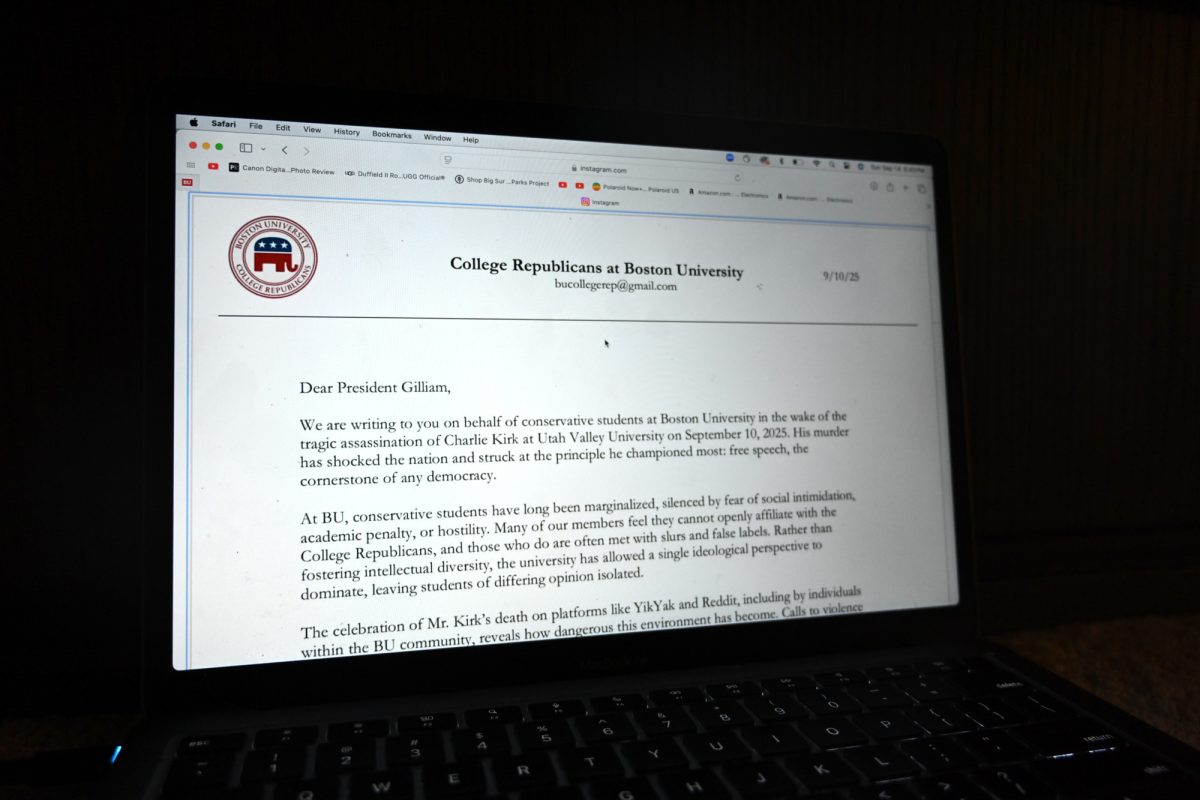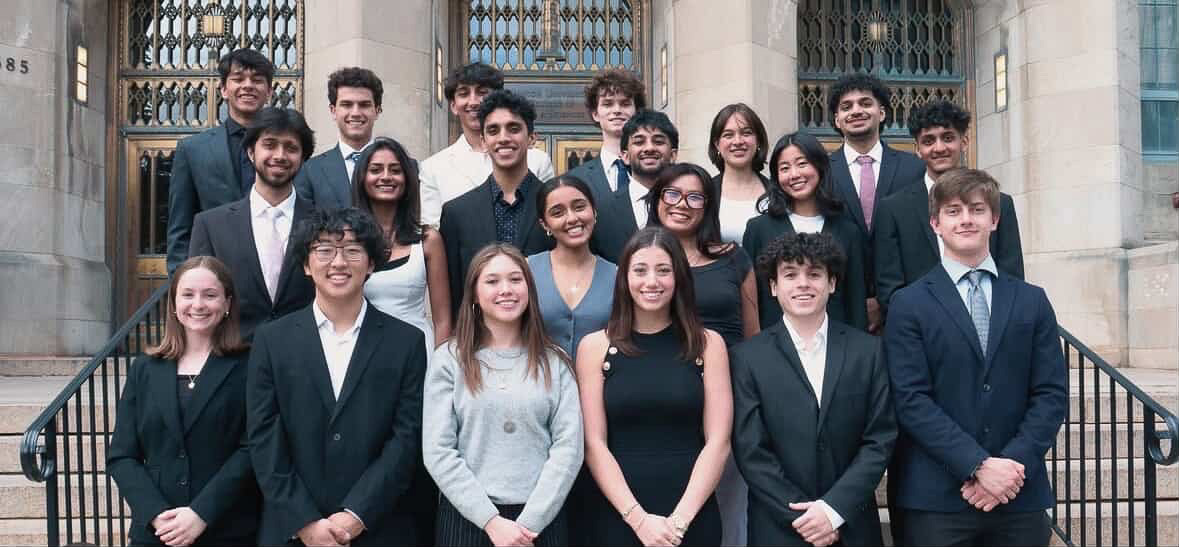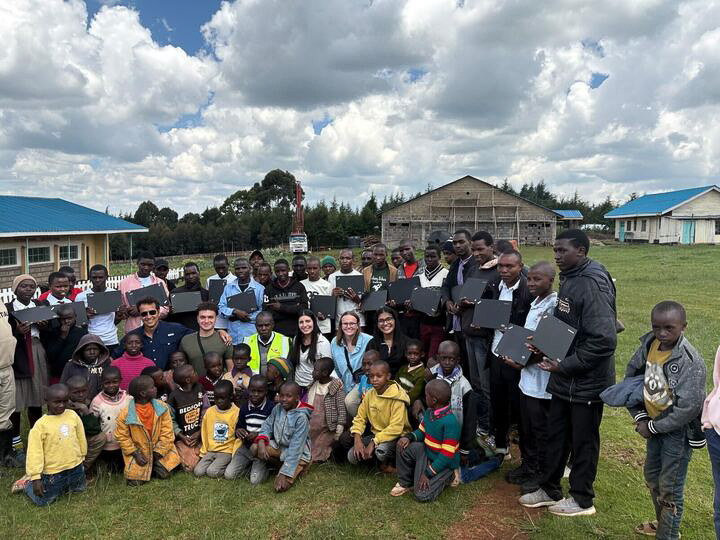After thirteen years of fervent biochemical analysis, the Human Genome Project (HGP) is complete. We now have at our disposal a virtual road map to the 30,000-someodd genes that “code for” a human being. Philosophers and scientists alike have eagerly anticipated the day when genetic loci can be pinpointed that account for unique traits that set mankind apart from his ape cousins.
The results are in, and, as previously suspected, man differs from his closest relative, the chimpanzee, in but 1% of his DNA. So what accounts for man’s whopping intellectual divergence? How can 300 genes account for the incredible diversity of thought, language and emotion experienced by only one species on the entire planet?
In the symposium “Genomic Approaches to Human Evolution” at the American Association for the Advancement of Science (AAAS) conference in Boston last month, five leading authorities on primate evolution addressed this question of human distinction. Biochemical, physiological and paleontological data contributed to answering the still-mystifying question of human uniqueness.
Caro-Beth Stewart of the State University of New York at Albany used biochemical analysis of mutations on pseudogenes, or “junk” DNA, to illustrate that the rapidly changing distance between human and ape DNA is not fully accounted for.
“The sharp contrast between molecular and morphological evolution on the human lineage demands an explanation,” she told a crowd of 100 scientists and journalists at the Hynes Convention Center on Monday afternoon.
In other words, humans look too much like apes to have evolved such a dramatically different lifestyle. Stewart is among the rising numbers of scientists who believe that, since the divergence of humans from chimps around five-and-a-half million years ago, humans have experienced strikingly little physical change in comparison with other vertebrates over the same time period.
Stewart concluded that many pseudogenes thought to have little effect on human characteristics have evolved under high Darwinian selection pressure: they imparted success on their bearer. But since genes that code for nothing cannot be “selected,” Stewart believes that much of the “junk”. or non-coding, DNA on human chromosomes is actually another source of the observed divergence from the great apes.
However, many scientists believe that studying such ineffectual genes is simply that: ineffectual. Studies of this type should concern genes that code for useful proteins, not ancient useless ones, according to Maryellen Ruvolo of Harvard University. Ruvolo has identified a gene coding for a specific subunit on an enzyme found solely in humans and some New World ape cousins.
The hormone chorionic gonadotropin (CG) is secreted by the placenta at the end of the first trimester of pregnancy, preventing the protective uterine lining from disintegrating. Other apes show traces of the hormone, but only in inactive form; CG’s role is performed by the hormone progesterone. Ruvolo believes genes coding for proteins like CG that have recently evolved are better models than pseudogenes for studying human divergence from the apes.
While new biochemical techniques alone can create new insight, many scientists choose to combine molecular data with traditional avenues of information.
“I’m not a molecular chauvinist,” said Todd Disotell of New York University. “Molecular studies are based on the fossil record, which calibrates their clock.” The molecular clock is the metaphor geneticists use to describe the regular rate mutations accrue in the genome.
Disotell used fossil evidence in an attempt to disprove the widely accepted view that protoapes, the animals which were ancestral to the group of primates we recognize as the apes,, radiated only once from Africa to the rest of the world in the Pliocene epoch, roughly 20 million years ago. When populations migrate, they can encounter an evolutionary “bottleneck” in which only certain genes are carried to, and thus expressed in, their new environment.
Based on relatively narrow divergence of mitochondrial DNA (mtDNA) sequences in Eurasian fossils, Disotell believes humans twice expanded from relatively small populations in Africa outward into other region. He dated the more recent migration at a mere 600,000 years ago, speculated the evolution of Homo sapiens from this lineage and concluded that a chimpanzee genome project is necessary to accurately assess our differences. The fact that ancestral humans might have radiated twice from Africa is important for a clear interpretation of the difference among humans and between humans and other species.
Although Disotell’s colleague Hendrik Poinar of the Max-Planck-Institute in Leipzig, Germany argued that DNA is too unstable for independent analysis when sampled from the majority of fossils, Poinar agreed that a second radiation of man out of Africa may account for the lack of divergence exhibited in mankind. So it seems that biochemical analysis of the human genome is slowly helping us figure out where and how we diverged from our ape cousins.
But what about divergence among humans? As far as scientists know, no particular genes make a person, for example, Italian or Chinese. These are cultural labels, not genetic ones. People in those populations are more likely to have some genetic traits in common, but these traits, with few exceptions, will be found in all populations. In 1993, the controversial Human Genome Diversity Project (HGD Project) was conceived out of Stanford University. According to the project’s mission statement, this project, though still in planning stages since the completion of the HGP, “seeks to understand the diversity and unity of the entire human species.”
The project plans to sample DNA from differing ethnic populations to determine which genes are responsible for ethnological differences. Daniel Goldstein of University College in London compared Y-chromosome diversity among Jewish populations found worldwide. Goldstein agreed with Disotell’s speculation of multiple human excursions from Africa, which could have led to two evolutionarily different human populations in Eurasia and Malaysia.
Goldstein believes that defining a generic haplotype, or groups of genes inherited together, of any specific locus on a chromosome can have great medical implications. For example, the improper function of a channel on cell membranes that transfers sodium can indicate epilepsy.
“If we can identify the most common expressions of particular genes in a given population, we can screen much more easily for diseases like epilepsy,” he told reporters.
The human genetic map may plot the course of science’s evolutionary expeditions, but currently we barely know which direction the compass points. The panel of experts explored new approaches to applying the HGP’s information, but agreed that insights into consciousness require further research into gene expression in the brain, the most divergent portion of human anatomy.
While stand-alone genes for language, emotion and reasoning probably do not exist, continued exploration of the genetic code may lead to better understanding of genes working together to create our unique human consciousness.


















































































































